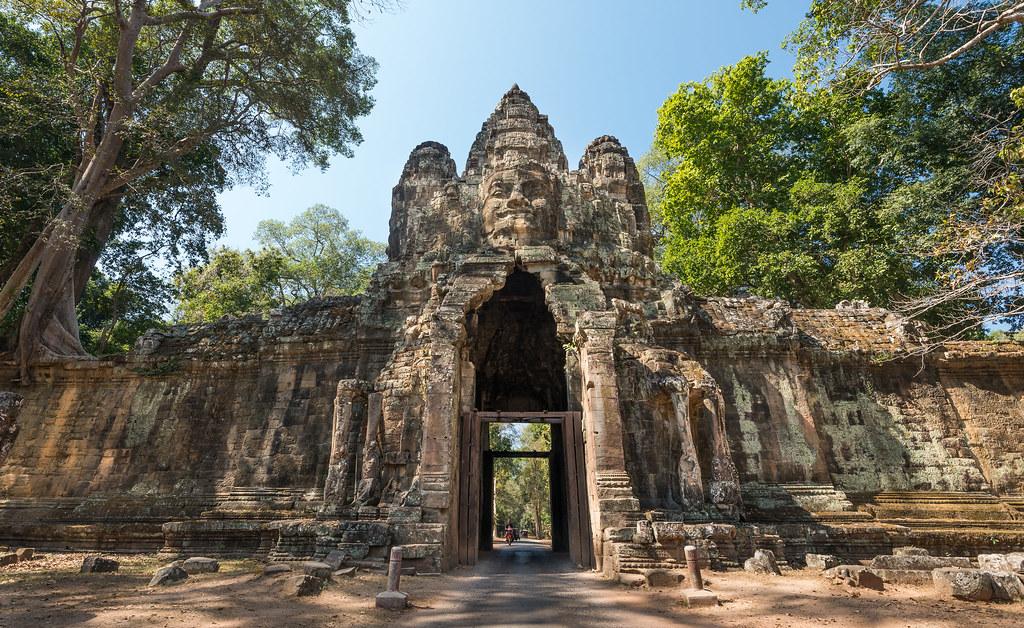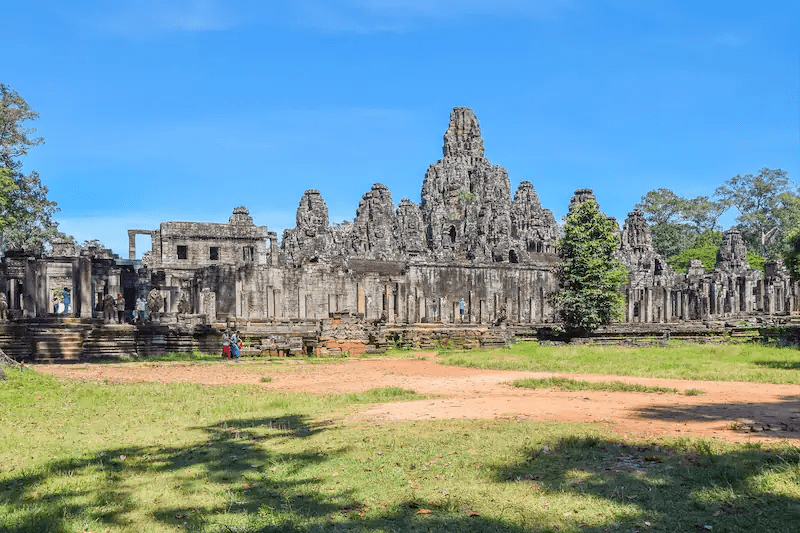Unraveling the Mysteries of Angkor Wat
In the heart of Cambodia’s jungle, Amber Takahashi captures the spiritual grandeur of Angkor Wat. As dawn illuminates the temple complex, every carved stone and silent corridor tells a story. Her journey extends to Angkor Thom and the enigmatic faces of Bayon, revealing the echoes of a civilization that still stirs through the moss-covered ruins.

Journeying Through Time
The Architecture and Design
Constructed in the 12th century during the Khmer Empire, Angkor Wat’s sandstone towers rise over moats and palm-lined paths. Its central spires mimic Mount Meru, the sacred axis of Hindu cosmology. The scale and precision of the structure remain a marvel centuries later.

Symbolism in Stone
The temple walls are lined with detailed bas-reliefs depicting battles from the Ramayana and Mahabharata, celestial dancers known as apsaras, and ceremonial processions. These carvings offer insight into Khmer religious beliefs and royal life. Each panel serves as a visual manuscript, carved with enduring precision.

The Greater Angkor Complex
Angkor Wat is only the beginning. Surrounding it is the vast Angkor Archaeological Park, home to temples like Ta Prohm, with roots spilling over ruined walls, and the multi-faced towers of Bayon. The city once housed hundreds of thousands, supported by a sophisticated water system and monumental infrastructure.

Preserving Angkor’s Legacy
Conservation Efforts
Ongoing conservation work is supported by the Cambodian government and international partners. Structural stabilization, drainage restoration, and digital mapping projects help protect the site’s fragile stonework and ensure access for generations to come.
Visitor Responsibility
Tourists are encouraged to respect designated walkways, avoid touching carvings, and dress modestly. Responsible behavior helps reduce erosion and maintain the spiritual atmosphere of the temples.
Planning Your Visit
When to Go
The best months to visit are November through February, when temperatures are cooler and humidity is lower. Arriving before sunrise provides the most dramatic views and a quieter experience.
Getting There
Angkor Wat is just outside Siem Reap, which is accessible via international and regional flights. Tuk-tuks, bicycles, and guided tours are popular ways to navigate the vast archaeological zone.
What to Bring
Wear comfortable walking shoes and breathable clothing. Bring water, sunscreen, and insect repellent. A wide-angle camera lens is ideal for capturing the grandeur of the temples.
Beyond the Temples
Angkor Wat is more than a destination—it is a bridge to the past. Walking through its galleries and courtyards is to experience the ingenuity of a lost empire. For travelers interested in cultural heritage and architectural splendor, it remains one of the world’s most compelling sites.
Explore more cultural journeys in our Destination Guides.


